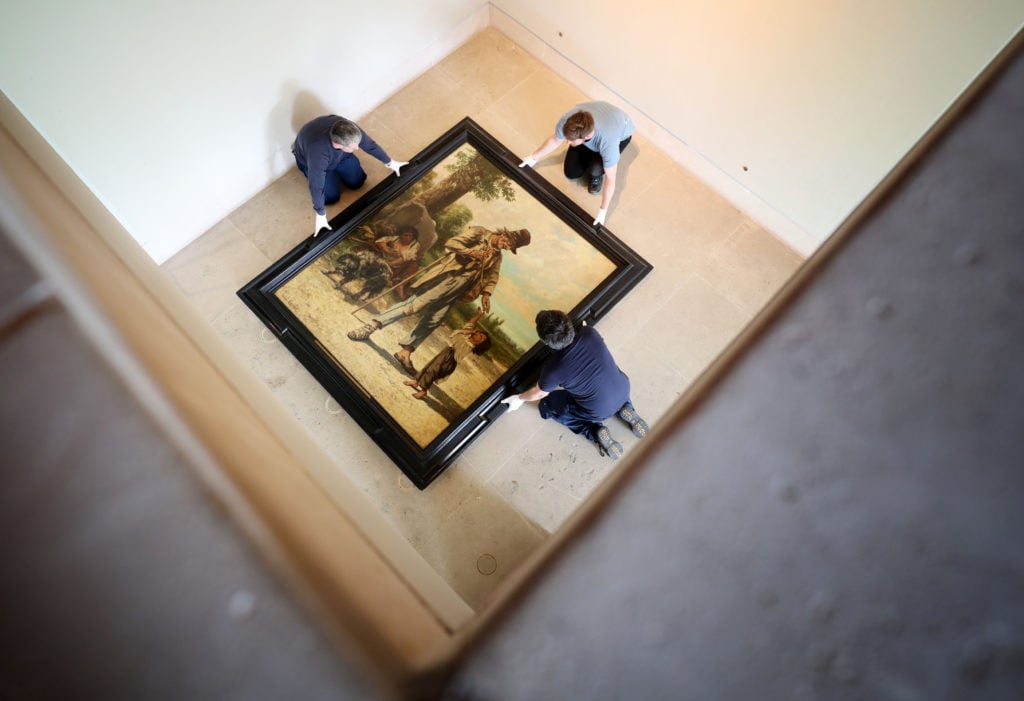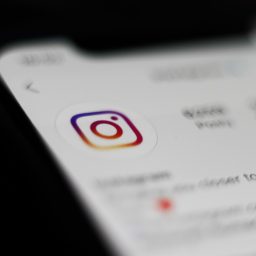After COVID-19 put the entire globe on lockdown, some aspects of the art world carried on—maybe not as usual, but usual enough: artists continued to labor in their studios, auction specialists kept hunting for consignments, and journalists continued to type away on their laptops. But almost overnight, art handlers found themselves going from booked-up to entirely without work. Now, some are applying for food stamps and searching for ways to pay next month’s rent with no anticipated income.
In the art world, as elsewhere, the pandemic has thrown into relief inequalities that existed well before the lockdown era began. Most art handlers are freelance or part-time employees with few protections who have found themselves utterly at sea in the current crisis, as the institutions that employ them scramble to keep even their full-time employees afloat.
According to a recent survey of more than 1,000 art workers conducted by Art Handler magazine, 80 percent of respondents are worried about affording rent in the wake of the current crisis and 81 percent cannot work from home.
Among the hundreds of art handlers who are suddenly out of work is Zaq Landsberg. “In the course of three to four days, I had more than $8,000 of freelance work vaporize,” he tells Artnet News.
Artists Left High and Dry
Artists often seek out art-handling gigs because the job’s flexibility enables them to maintain their own art-making practices. This is particularly critical because the art-world epicenters they often live in—New York, San Francisco, London—are among the most expensive cities in the world. But now, the piecemeal nature of their work has left many without a support system.
Artist John Bianchi estimates that around half his annual income comes from art-handling jobs, mostly for major art fairs and large-scale installations at museums in Russia and China. Over the course of two weeks, almost all his prospective gigs were put on hold or cancelled, including an exhibition in Doha that was due to begin installation on March 12.
“I was not paid for the project and it looks as if it won’t be happening for quite some time,” he tells Artnet News. “The uncertainty is what is keeping me, and I’m guessing most of us, up at night. No one knows how long this will go on.”
Many art handlers we spoke to said the uncertainty of whether they would be paid in part or in full for assigned jobs—or paid in a timely way for completed jobs—was making it nearly impossible to plan ahead or figure out what sort of drastic measures they might need to take to limit their expenses.
“I am currently owed a significant amount of money by two people for work done before the new year, so I hope they pay soon,” says artist Daniel Herr, who estimates that art handling accounts for some 80 percent of his income. “I work for a few small handling companies and then intermittently for a handful of galleries, so there is no support system.”
Some institutions, like Bard College’s Hessel Museum in Annandale-on-Hudson, New York, are paying in full for work that was scheduled well before the crisis hit, even though it can’t be performed (and Bard’s art handlers will have to work off the time when the lockdown is finally over). “Our art handlers are very important to us and we wanted to make sure that the people who expected to be paid for the next three weeks to finish that project still received that money in the same time frame,” says Tom Eccles, the director of the Center for Curatorial Studies at Bard College.
Other institutions ended up paying only a portion of the promised fee for scheduled work. Landsberg says the Wallach Art Gallery at Columbia University in New York, where he was due to complete an installation, provided “75 percent of the lost wages the first week, and 50 percent of the second week, and nothing after that.” (Lewis Long, associate director of external affairs at the Wallach, counters that art handlers received 80 percent pay for the first week and 50 percent the following, “though those services were not performed.”)

Installation view of “Countryside The Future” at the Guggenheim. Courtesy of the Solomon R. Guggenheim Museum.
At the Guggenheim, on-call workers, including art handlers, will be paid for scheduled work only through March 29. “Many on-call employees of the museum committed to working at the Guggenheim prior to the crisis. This, of course, means that those employees did not schedule other work during that time,” says Andres Puerta, director of special projects at IOUE 30, which represents the Guggenheim’s art handlers. “The Guggenheim is refusing to honor those hours and instead has cut these employees off.” (Around 20 of the union’s members are full-time; 11 of those were placed on furlough on April 10, according to Puerta.)
A Bigger Problem
Even when the market is flush, the workers who keep the fast-moving global art world on track—ensuring that museum blockbusters, art fairs, marquee auctions, or gallery shows actually happen—are also some of the most vulnerable in the ecosystem, often lacking benefits like health insurance or paid sick leave.
That is a large reason why last year saw a wave of unionization efforts (both successful and unsuccessful) across the country, including among art handlers at the Guggenheim and the art-storage company UOVO. In fact, Art Handler had been planning to spotlight the unionization trend in its next issue, before the pandemic eclipsed nearly everything else.
But the current crisis has revealed that, union or non-union, art handlers are among the most vulnerable employees in the sector. “Companies are laying off workers left and right,” says Art Handler magazine founder Clynton Lowry. “In some cases, employers are really trying to do the best they can, but they are also small businesses themselves and are obviously taking a significant hit. No one really knows what the outcome is.”
Seven art handlers have lost their jobs amid company-wide layoffs at UOVO—six of whom were involved with a recent failed attempt to unionize, according to the Art Newspaper. The company says that “we are committed to supporting our team through the pandemic, including our art handlers, with secure income.” (Those who were not laid off will continue to receive full pay for the duration of the lockdown.)
Teamsters Local 814, which led the company’s failed unionization efforts, has filed a complaint against UOVO with the National Labor Relations Board protesting the move.
“They’ve broken the law by firing these union supporters,” union rep Julian Tysh tells Artnet News. “They figured they could wait until there was convenient time to get rid of some of the union agitators, to send a message that this is what happens if you dare stand up for yourself…. They used COVID as an opportunity to clean house.”
In a statement, UOVO says “perceived support of labor unions was not a factor in our decision and management was also affected.”
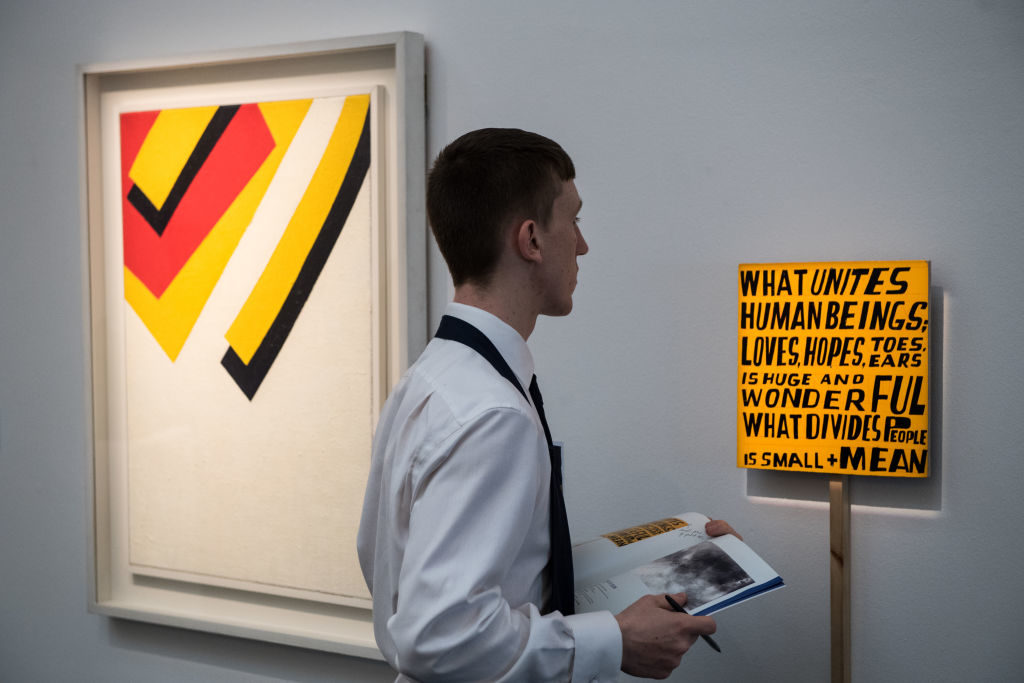
A Sotheby’s art handler takes notes next to What Unites Human Beings (R) at Sotheby’s. Photo: Chris J Ratcliffe/Getty Images for Sotheby’s.
Art Storage—and Lives—on Hold
Also unsettling for many handlers has been the confusing communication about furloughs and layoffs, and unfulfilled promises of being able to collect on paid time off. Prior to stay-at-home orders, as the crisis escalated, “companies were putting the decision on the art handlers to make the choice on whether or not they should go in to work,” Lowry says. “That is probably the most disheartening thing, because obviously they don’t want to put themselves or anyone else at risk but essentially they are being offered work.”
An employee of the prominent fine-art logistics firm Cadogan Tate, who wished to remain anonymous, said the company initially took measures to ensure their safety by supplying gloves, hand sanitizer, and cleaning products; enforcing social distancing; and substituting a mobile app to punch in and out in lieu of a time clock.
But, the employee said, after the government issued a work-from-home order for nonessential employees, “the company sent home only office workers, ignoring requests from the operations team (art handlers, drivers, warehouse team members, preparators, etc.) to stagger shifts to slow the spread of the virus should any of us be infected already.”
Emails reviewed by Artnet News confirm that the company initially told workers they would be able to use paid time off in order to continue receiving paychecks after the company shut down operations on March 20. But then, according to the employee, the company “did an about-face” and put them on “involuntary unpaid leave,” encouraging workers to file for unemployment.
“We all feel manipulated,” the Cadogan Tate employee says. “I am applying for work, trying to stay in New York City obviously, but I have to expand my search and be open to the possibility of leaving this city that I love so dearly. Our life and livelihood are in jeopardy.”
Cadogan Tate did not respond to repeated emails seeking comment.
Other art-shipping companies have also furloughed scores of workers. Crozier, which has 19 locations in eight states, began a six-week furlough on April 7 for approximately 300 staff members. Employees will receive health benefits during this time, according to a representative.
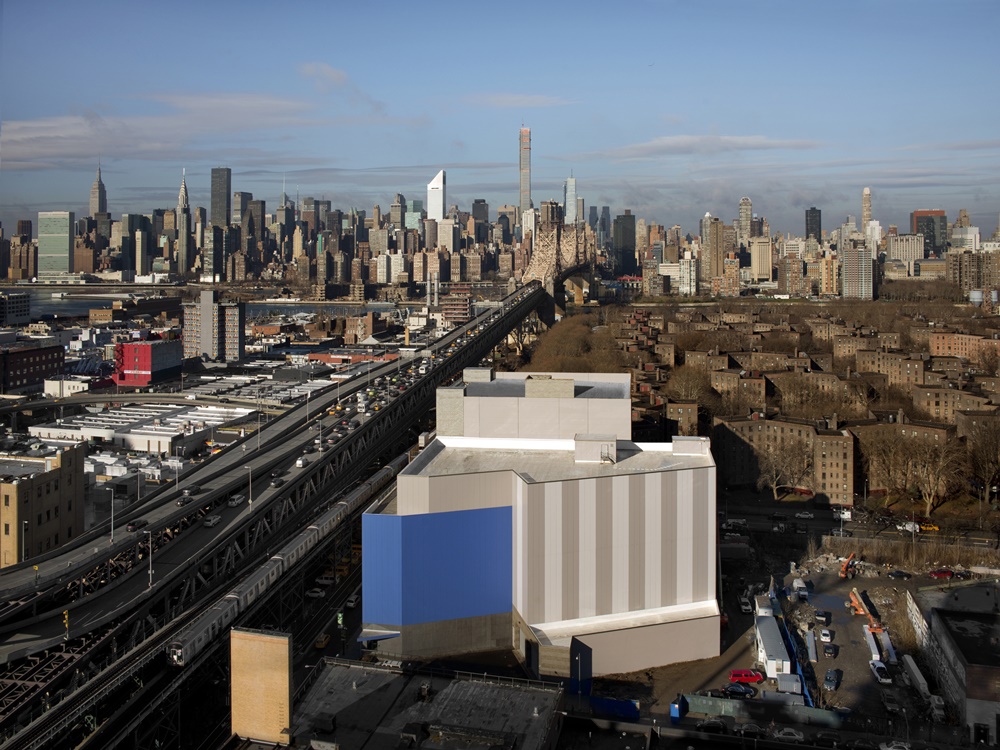
UOVO art storage facility in Long Island City, Queens. Image courtesy of UOVO.
“As soon as we are able to move forward with projects deemed essential, we will deploy team members on a next-day basis, provided it is safe and legally permissible to do so,” the spokesperson said. “We will reinstate freelance art technicians on an as-needed basis once business resumes.”
Logistics company Dietl, meanwhile, furloughed 15 of its 90-person staff. “They were mostly people who we very recently hired and just had absolutely no work,” owner Fritz Dietl says. “At some point you need to do something to save the business. You’re trying to hold on to everybody else but it depends on how long this continues.” He is still fully staffed at his Delaware location, he says, with many employees working from home.
Dietl applied for a small business payroll loan through the US Government’s CARES Act on the first day it became available and is waiting to hear back. He also launched an online platform where the dozens of freelance technicians, many of whom are artists, can directly sell their work.
“In the past ten years, the freelance work was lucrative and allowed these guys to pursue their art career and make enough money on the side, and survive,” Dietl says. “These guys don’t have any safety net to fall back on.” (One art handler, however, is unimpressed: “Let’s hope he plans on doing more than holding an online art show,” he says.)
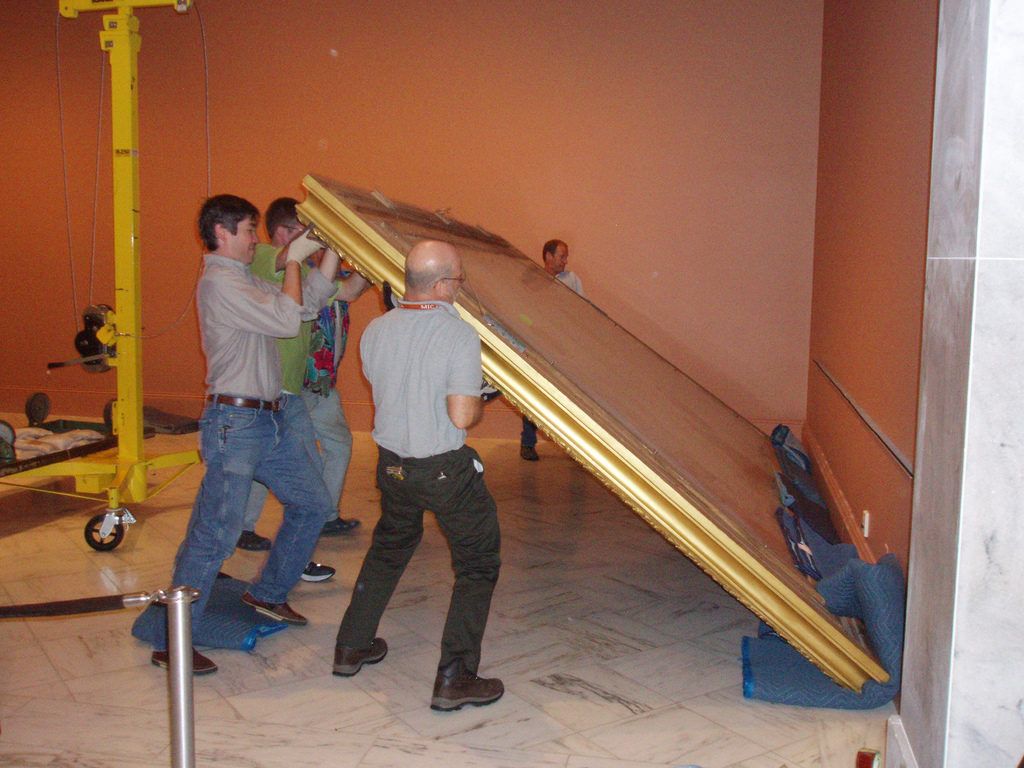
Art handlers at the Smithsonian. Image courtesy of Flickr.
Looking Ahead
Art handlers, in addition to their employers, may find a lifeline through the CARES Act, which makes unemployment benefits available to freelancers and the self-employed. Dana Lossia, an employment attorney at Levy Ratner, calls the potential up-to-$600 a week in added emergency funds an “enormous, huge benefit on top of unemployment.”
Many preparators and conservators, she adds, may also qualify for traditional unemployment benefits if they are paid as W-2 employees. “They might work a ton of hours for a particular institution, or they might be able to get unemployment benefits from a couple of different museums,” she says. “They don’t necessarily fall through the cracks.”
Overwhelmed state unemployment offices were already being inundated by new applicants before CARES passed, so getting benefits processed could take time—but it’s still a crucial lifeline for art handlers and other freelance art employees facing financial difficulties.
“Hopefully people know you don’t have to have been fully laid off or let go to get unemployment,” Lossia adds. “Even furloughed people can get unemployment. Even people who are still working for that employer but have just seen their hours scaled back can get unemployment.”
And, despite the acute stress, some art handlers see a light at the end of the tunnel. “It’s a rare opportunity to see what a big general strike looks like. It’s possible when everyone returns there will be more power restored to the employee,” says art handler Steven Mykietyn, who works on the Guggenheim’s multimedia crew. “If I were to casually not come in on a regular day in non-pandemic times, the show would not turn on for the guests.”
The Art Handlers Alliance, a group of professionals working to improve conditions in the field, also sees the current situation as an opportunity to rectify a long-held imbalance of power between institutions and those who transport the art they present. “There’s no doubt that this crisis has revealed a neglect in the arts,” says Ian, a representative of the Art Handlers Alliance who asked for his last name to be withheld. “We can’t go back to the way things were before.”
